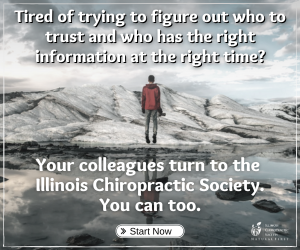
Posture

Posture is affected by the body’s response to the position of the head as it relates to the center of gravity. Posture defines the interrelationship between muscle and skeletal tissue. Postural abnormalities may contribute to autonomic dysfunction, myotonic, and sensory facilitation.
A Vehicular Injury
A 35-year-old female was injured in a motor vehicle accident [MVA]. Her vehicle was struck from behind and crashed into an embankment. She was wearing a malfunctioning seat belt. As her head went through the windshield, she protected her face with her right arm. Her right thigh was compressed against the gear shifter on impact.
Her diagnosis following acute care was a grade II tear to the right supraspinatus tendon on the right and a grade I tear to the medial meniscus at the right knee. The lateral thigh was radiographed to rule out myositis ossificans. She sustained a cervical whiplash and concussion that has left her very sensitive to odors.
Chiropractic and therapeutic massage care began immediately following the MVA. The chiropractic practitioner utilized Diversified technique methods to reduce subluxation complexes in all regions of the spine. The patient responded well to care, finding relief from headaches, anxiety, nervousness, and overall muscular pain.
Five years of post-acute care this patient remained under maintenance chiropractic care. She leads a very active life, including regular exercise (both aerobic and anaerobic programs). After relocating to another state, she sought care at my office.
Examination
Upon visual inspection the patient presented with left head tilt and right rotation; left high shoulder; left thoracic rotation around the “y” axis; decreased waistline on the left from T-12 to the left ilium; hip hiking on the left; increased transverse diameter on the right gluteal area; right femur rotated internally, creating a valgus stress at the knee and excessive pronation in the right foot; and the left patella deviating laterally.
Visual inspection of the muscular system is concerned with size, shape, and tone of the superficial layer known to respond by hyperactivity and tightness or by weakness and inhibition. An impression of posture is determined through inspection from all views: anterior, posterior and sagittal. Muscular imbalance can prove to be an essential component of the dysfunction associated with syndromes related to the musculoskeletal system. (1,2)
Care
The care plan for this patient was designed to reduce subluxations detected at each office visit. In addition, the patient began a rehabilitation program to improve muscle imbalances. In conjunction with the rehabilitation protocol, the patient was fitted for custom-made, stabilizing orthotics to improve plantar input to stimulate deep proprioceptive sensors.
During each office visit, the patient is evaluated for abnormal restriction of motion in a certain direction; this is equated to a pathological barrier where resistance is determined. This resistance may result from a subluxation, muscle shortening, or both. Manual resistance techniques are one approach in the elimination of the resistance and to promote restoration of a full range of motion.
The spinal stabilization program was designed to control musculoskeletal loads in a biomechanically effective manner. Core stability training, also known as lumbar stabilization, is an active form of rehabilitation to strengthen the muscles that support the spine. Core muscles include rectus and transverse abdominis, internal and external obliques, multifidus, interspinalis, intertransversari, and thoracolumbar fascia.
Additional spinal stabilization exercises were utilized to challenge the core region and strengthen weakened or inhibited muscles. Simultaneously the patient was assisted through proprioceptive neuromuscular facilitation [PNF] to enhance the stretch of all shortened muscles as listed above. PNF exercises are a tool utilized within the practitioner’s office to bridge the patient from passive to active care. (1,2)
The goal of active care for this patient was to improve posture and motor control for ultimate functional integrity. Homeostasis and autonomic regulation are intimately connected to the posture of the musculoskeletal frame. (5) Propriosensory retraining included postural re-education utilizing custom-made stabilizing orthotics, unstable exercises for proprioception, and increasing joint mobility through chiropractic adjustments.
Neurological Coordination
Neurological coordination of the musculoskeletal frame requires continuous input from balance, sensory-motor receptors, and gait. This coordination starts in infancy through the development of the nervous system, as demonstrated through the reaching of neurological milestones. The most important of these milestones is the cross-crawl pattern which facilitates the integration of vestibular information with other senses.
Postural Restoration
Custom-made stabilizing orthotics restored postural stimulation as close to neutral as possible. The use of orthotics, coupled with a progressive rehabilitation program, offers the greatest potential for change in this patient — a change that will incorporate sensory and motor function, in an effort to optimize postural efficiency.
References
1. Liebenson CL. Active muscle relaxation techniques, part I: basic principles and methods. J Manip Physiol Ther 1989; 12:446.
2. Liebenson CL. Active muscle relaxation techniques, part II: clinical application. J Manip Physiol Ther 1989; 13:2. 3. Lennon BM, Shealy NC, Cady RK, Matta W, Cox R, Simpson WF. Postural and respiratory modulation of autonomic function, pain, and health. AJPM 1994; 4:36-39.
About the Author
Dr. Hanson is an assistant professor at Life University, where she oversees the Pediatric Unit. She is an instructor for the ICA Pediatric Diplomate Program. She has maintained a private practice for 16 years, specializing in prenatal care and pediatrics. Dr. Hanson has completed the certification process as a Neuro-Developmental Therapist (NDT) through the International Neuro-Physiological Psychology Institute of Chester, England. Her credentials are one in eight in the United States founded in the INPP training for the developmentally delayed child.

















